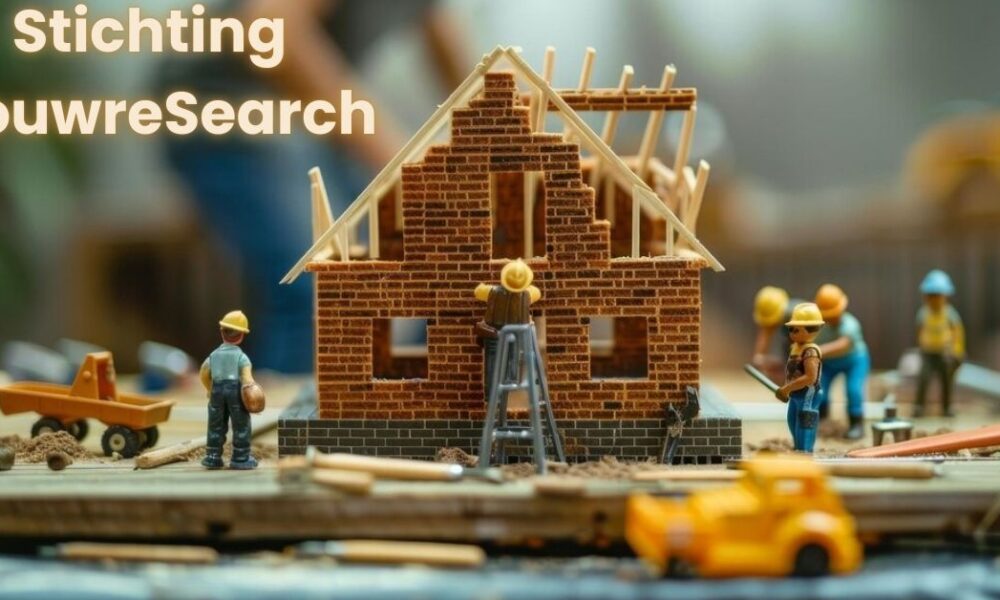Introduction
In the world of architecture, engineering, and construction, knowledge is one of the most valuable building materials. Standards, methods, and shared expertise shape not only how buildings are designed and constructed but also how they perform for decades to come. In the Netherlands, Stichting Bouwresearch (SBR) played a central role in creating and distributing this knowledge for more than half a century. Founded in the aftermath of World War II, SBR’s work left an enduring legacy in the Dutch construction industry, laying the groundwork for innovations in safety, sustainability, and efficiency.
This article explores the history, mission, and impact of Stichting Bouwresearch, showing how a foundation dedicated to knowledge became one of the cornerstones of Dutch building culture.
The Post-War Origins of SBR
The devastation of the Second World War left the Netherlands with urgent housing shortages and a damaged infrastructure. In the late 1940s and early 1950s, the challenge was not only to rebuild quickly but also to do so with a higher level of quality and efficiency than ever before. Traditional building methods could not keep pace with the demands of rapid reconstruction.
This context gave rise to Stichting Bouwresearch, established in 1959. Its mission was straightforward but ambitious: to bridge the gap between scientific research, technical knowledge, and everyday building practice. By collecting, organizing, and disseminating technical insights, SBR empowered architects, engineers, contractors, and policymakers to work from a shared foundation of trusted knowledge.
A Mission of Knowledge Sharing
At its core, SBR was never a commercial enterprise. Instead, it was a non-profit foundation funded and supported by stakeholders in the construction sector — from professional associations to government bodies and industry leaders. Its key purpose was to ensure that knowledge generated through research did not remain confined to universities or laboratories but reached the hands of those who needed it most: practitioners on construction sites and in design studios.
SBR’s activities included:
-
Publishing guidelines: Technical handbooks, manuals, and checklists that standardized construction practices.
-
Research coordination: Bringing together universities, institutes, and companies to collaborate on applied research projects.
-
Training and education: Organizing workshops and courses to keep professionals up to date.
-
Knowledge platforms: Creating accessible databases of building details, best practices, and case studies.
Through these efforts, SBR became a knowledge broker — translating complex research into practical tools that could directly improve building quality.
Standardization and Practical Tools
One of the most visible contributions of SBR was its role in developing standardized building details. Construction drawings are often filled with small but critical decisions: how a window connects to a wall, how insulation is placed, or how joints are sealed. Poor execution of these details can lead to problems like leaks, drafts, and structural weaknesses.
SBR produced standardized detail drawings that architects and engineers could incorporate into their designs. These details reflected best practices tested in research and field applications. By using SBR’s details, practitioners reduced the risk of errors, improved construction speed, and raised the overall quality of Dutch buildings.
Another flagship contribution was the SBR Reference Details system, a library of thousands of building solutions covering topics such as energy efficiency, acoustics, fire safety, and structural integrity. These reference details became an essential part of design offices and educational institutions.
Bridging Research and Industry
The strength of Stichting Bouwresearch lay in its collaborative approach. Instead of working in isolation, it created a network where academia, government, and industry professionals could come together.
For example, universities provided scientific insights into materials and construction physics, while contractors contributed real-world experience from building sites. By combining these perspectives, SBR ensured that its guidelines were both technically rigorous and practically feasible.
This model of collaboration also allowed SBR to act as a neutral platform in an industry where commercial competition often limits knowledge sharing. Companies could contribute to joint research without fearing that their competitors would gain an unfair advantage, because the results were distributed for the collective benefit of the sector.
Contributions to Sustainability
As environmental awareness grew in the late 20th century, SBR adapted its mission to address the new challenges of sustainable construction. The foundation played a pioneering role in promoting energy-efficient building methods, insulation standards, and life-cycle thinking.
SBR publications introduced concepts such as:
-
Energy performance indicators for buildings.
-
Best practices in passive design, including natural ventilation and solar gain.
-
Guidelines for circular construction, focusing on material reuse and minimizing waste.
-
Strategies for sustainable urban development, integrating building design with environmental planning.
These contributions helped prepare the Dutch construction industry for stricter energy regulations and for the broader European sustainability agenda. Many of the concepts that became mainstream in the 2000s had already been tested and documented by SBR in earlier decades.
Education and Professional Development
Another critical part of SBR’s legacy is its influence on education and lifelong learning. The foundation’s manuals and guidelines were not only used by professionals but also became standard teaching materials in architecture and engineering schools across the Netherlands.
By equipping students with reliable reference materials, SBR ensured that future generations of professionals entered the workforce with a solid grounding in best practices. For practitioners, the foundation’s workshops and courses created opportunities to update their skills in line with new technologies, regulations, and design approaches.
In this way, SBR acted as a continuous learning hub for the industry.
The Transition to Knowledge Platforms
With the rise of digital technology in the 1990s and 2000s, SBR transformed its knowledge-sharing activities. Instead of relying solely on printed manuals, the foundation began to develop digital platforms where architects and engineers could access information online.
The most notable example is the SBR Knowledge Base, an online system that provided searchable access to reference details, guidelines, and case studies. This platform made it easier for professionals to integrate trusted knowledge directly into their digital workflows, especially as Computer-Aided Design (CAD) and later Building Information Modeling (BIM) became standard.
This digital shift ensured that SBR remained relevant in a rapidly changing industry.
Organizational Changes and Integration
By the early 21st century, the Dutch construction knowledge landscape was changing. Several organizations with overlapping missions existed alongside SBR, leading to discussions about consolidation. In 2013, Stichting Bouwresearch merged into SBRCURnet, a new foundation that combined SBR’s resources with those of CUR (Centrum voor Regelgeving en Onderzoek in de Grond-, Water- en Wegenbouw en de Verkeerstechniek).
SBRCURnet continued the tradition of developing guidelines, reference details, and knowledge platforms, ensuring that SBR’s legacy lived on. Later, parts of this knowledge were integrated into the Knowledge Platform for the Built Environment (Kennisplatform Bouw en Installatie), which remains active today.
Lasting Impact on the Dutch Construction Sector
Even though SBR as an independent foundation no longer exists, its impact remains visible across the Dutch construction sector. Its legacy can be seen in:
-
Building codes and regulations, many of which were influenced by SBR research.
-
Professional practice, where standardized details and guidelines remain embedded.
-
Education, where generations of architects and engineers have relied on SBR materials.
-
Sustainability frameworks, which drew heavily on the groundwork laid by SBR studies.
Perhaps most importantly, SBR established a culture of knowledge sharing in the Dutch construction industry. It demonstrated that collaboration, openness, and trust could raise the quality of the entire sector, benefiting not only companies but also society at large.
Lessons for Today’s Industry
The story of Stichting Bouwresearch offers valuable lessons for today’s global construction challenges. As the world faces urgent tasks such as climate adaptation, housing shortages, and the need for circular building, the principles that guided SBR remain highly relevant:
-
Knowledge must be accessible: Research only has value when it reaches practitioners.
-
Collaboration beats competition: Shared challenges require collective solutions.
-
Practical tools matter: Translating science into usable details, checklists, and guidelines makes change possible.
-
Adaptation is essential: From post-war reconstruction to sustainability and digitalization, SBR succeeded because it evolved with the times.
Conclusion
The knowledge legacy of Stichting Bouwresearch is more than a historical footnote in Dutch architecture. It represents a living foundation upon which modern construction practices continue to be built. By bringing together research, practice, and policy, SBR created a culture of shared expertise that raised the quality, safety, and sustainability of the built environment in the Netherlands.



